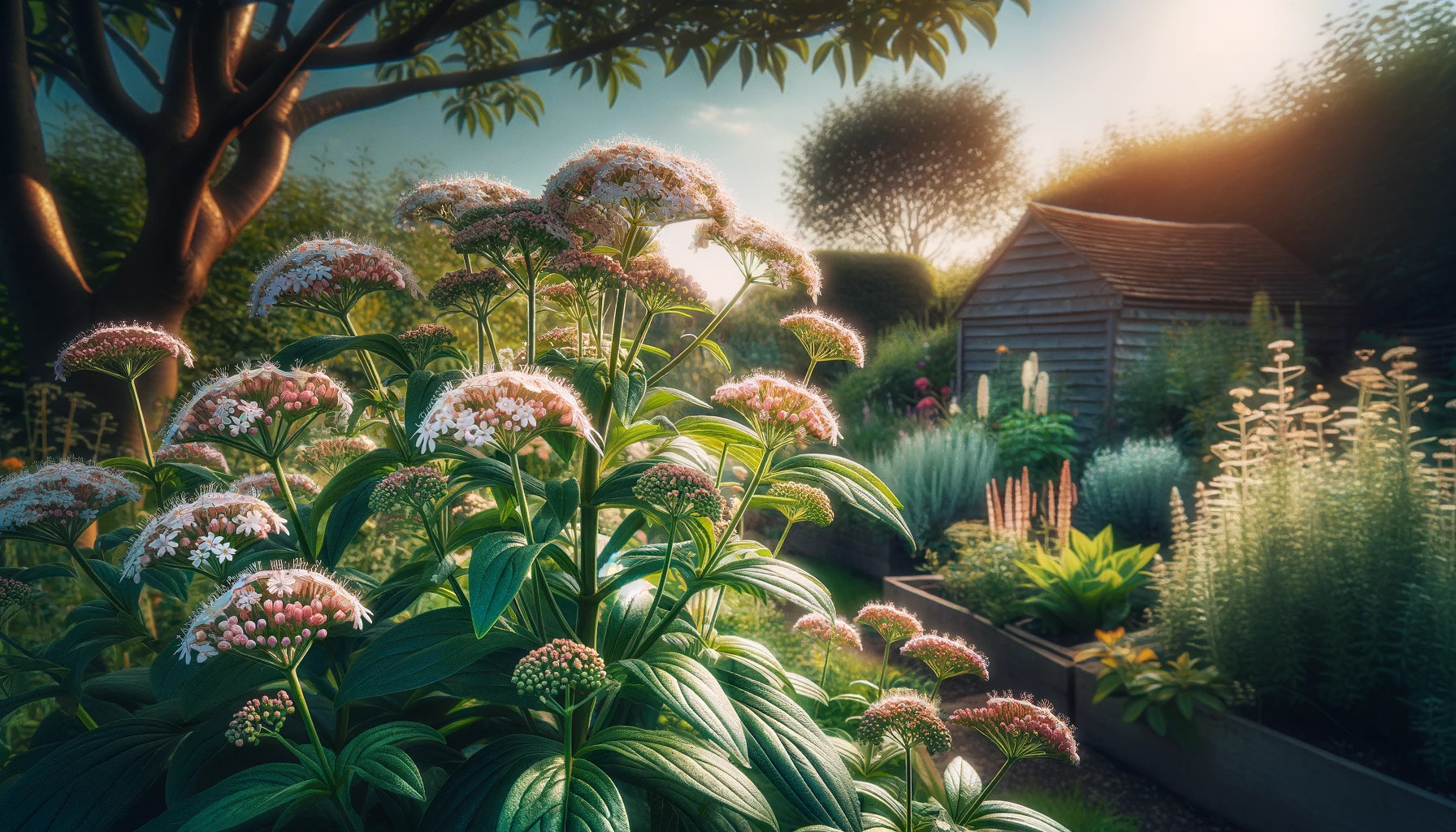The Valerian plant, scientifically known as Valeriana officinalis, is a highly esteemed perennial herb renowned for its ornamental and medicinal attributes. Originating in Europe and parts of Asia, it has since spread to North America, where it’s cultivated both in herb gardens and as a naturalized species.
Appearance
Valerian plants are visually striking, typically growing to a height of 4 to 5 feet when mature. Their upright stems are robust and hollow, supporting a cluster of sweetly scented, small, pale pink or white flowers. These blossoms, appearing in the warm months of summer, are arranged in tight, umbrella-like clusters known as cymes. The foliage of Valerian is equally attractive, with pinnate leaves that are feather-like in appearance and a vibrant green in colour. The leaves are arranged in pairs along the stem, adding to the plant’s symmetrical beauty.
Growth and Cultivation
Valerian thrives in a variety of soil types, though it prefers rich, well-drained soil. It’s a hardy plant that can tolerate partial shade but flourishes in full sunlight. When planting Valerian, it’s important to give it ample space as it can spread quite extensively. Regular watering, particularly in dry periods, is crucial for maintaining its lush appearance. Despite its hardiness, it’s relatively low-maintenance, making it a favorite among both novice and experienced gardeners.
Uses in the Garden
In the garden, Valerian serves multiple roles. Primarily, it’s grown for its ornamental value. The beautiful flowers not only add aesthetic appeal but also attract a variety of pollinators, including bees and butterflies, enhancing the biodiversity of the garden. Additionally, Valerian is known for its pleasant fragrance, which can be a delightful addition to any garden setting.
Beyond its beauty, Valerian is also recognized for its medicinal properties. The roots have been used in traditional medicine for centuries, primarily for their sedative and calming effects. They are often harvested in the fall and can be dried for use in teas or as an herbal extract.
Companion Planting
Valerian can also be a beneficial companion plant. It’s believed to improve the health of surrounding plants by enhancing soil nutrients, particularly phosphorus. This makes it an excellent addition to vegetable gardens or mixed flower borders.
Conclusion
In conclusion, the Valerian plant is not only a visually appealing addition to the garden but also a multifunctional herb with a rich history in herbal medicine. Its ease of cultivation, coupled with its various uses, makes it a valuable and attractive choice for gardeners seeking to add both beauty and functionality to their outdoor spaces. Whether used for its ornamental appeal, its medicinal roots, or as a companion plant, Valerian is undoubtedly a versatile and beneficial addition to any garden.
